The South Pacific Island of Bora Bora belongs to French Polynesia.
With sparkling waters and sunny weather, this volcanic island provides a popular getaway for couples.
Many cruise lines stop here, and you can fly in as well from Tahiti.
The island provides many luxury resorts from which to choose, typically ranging in cost from $400 to $2,000 per night.
A typical one-week trip costs $11,000.
As expensive as it is, the island proves lax and lazy.
Tourists wear their swimsuits or shorts and a t-shirt.
No one dresses up and a sundress might qualify as formal attire for a woman.
Warnings & Dangers in Bora Bora

OVERALL RISK: LOW
Overall, Bora Bora presents a truly low risk to travelers. You’re more likely to get bonked on the head by a coconut dropping from a tree than to get bitten by a shark. Muggings provide rarely and so do pickpockets. While the island’s automotive travel proves a bit iffy, you’re safe as long as you walk or ride a bike. Plan your trip to avoid hurricane and cyclone seasons. Also, earthquakes elsewhere can trigger tidal waves.

TRANSPORT & TAXIS RISK: MEDIUM
Walk or bike. The roads are not wide. The island provides no mass transit. You can find a few taxis and Le Truck, which sort of resembles a bus line that only serves the main road. With its safety record unknown and no real rush to get anywhere on Bora Bora, why not cycle? The sand and surf provide a gorgeous view.

PICKPOCKETS RISK: LOW
Few reports of crime exist in Bora Bora. You should take the basic precautions of wearing a travel belt or fanny pack with the pack in front and fully zipped shut. Avoid flashing your cash. Using a money belt or anti-theft purse typically keeps your money and identification safe. You’ll need to use the most care at the ferry’s free drop-off point, beachfront dining establishments, and while shopping.

NATURAL DISASTERS RISK: HIGH
Hurricanes and cyclones happen seasonally. Earthquakes in Chile or Samoa trigger tsunamis. You need to train yourself in how to react and learn the island’s warning system upon your arrival. When you hear the tsunami warning sound, you should immediately head for high ground. While it might sound funny, there’s a high danger of falling coconuts. The average coconut weighs roughly 5.5 pounds (2.5 kilograms). Its tree grows to 20 to 80 feet in height. You can incur a serious brain injury if a coconut falls on your head.

MUGGING RISK: LOW
The mugging risk stands at about the same level as the pickpocket risk. You’ll need to watch your bags and purse at the ferry stop, hotels, and shops. Wear a money belt and always traverse the streets with a trusted friend or family member.

TERRORISM RISK: LOW
Bora Bora has never had a terrorist attack. Nothing close to one has ever occurred there. It served as a military supply base during World War II, known as Operation Bobcat. The island lore says that when the base closed in 1946, the US service personnel didn’t want to leave, and the French had to remove them.

SCAMS RISK: LOW
You won’t fall privy to any Nigerian-type scams in Bora Bora. Of course, if someone approaches you about carrying a package or money for them, you should refuse.

WOMEN TRAVELERS RISK: LOW
You could travel to Bora Bora alone if you’re a woman and feel perfectly safe. You’ll be surrounded by vacationing couples though since it is a top honeymoon destination. Many couples go there for their anniversary, too. Some of the resorts charge a fee for those traveling alone (guys, too).

TAP WATER RISK: MEDIUM
Drink bottled water. The tap water in Bora Bora goes untreated. Just as with visiting Mexico, you should avoid drinking the water. The hotels on the island provide bottled water and you should take advantage of it.
Safest Places to Visit in Bora Bora
Tourists and travelers can enjoy the beach, biking, hiking, snorkeling, and diving.
The island’s resorts and independent hotels pride themselves on the safety of the island.
The majority of the visitors to the island are couples.
It is considered one of the most romantic destinations in the world.
The resorts consist of big names like Intercontinental and Four Seasons.
While the buildings on the island don’t resemble what most people associate with those brands, the service level and amenities match all of their other locations.
Places to Avoid in Bora Bora
As odd as it may sound, avoid sitting under a coconut palm tree.
Also, examine any trees you plan to erect a hammock between because the coconuts can fall and knock you out of the hammock.
Imagine the force of a five-pound dumbbell falling about 50 feet.
Some visitors to the island have incurred traumatic brain injuries (TBI) from the falling hard-shelled fruit.
As funny and cartoonish as it sounds, you won’t see a native islander sitting under a palm tree and that’s why.
Choose a different shade tree.
You also should dive carefully.
People do enjoy diving into the exquisite cerulean waters however, you should investigate the depth of the water before diving.
In one instance in the past decade, a tourist misjudged and became paralyzed when they dove into shallow waters.
Before you snorkel or deep-sea dive, learn about the bends, also called decompression sickness, and how to avoid them.
You should end your dive carefully and watch your tanks to ensure you have adequate air to slowly rise to the top of the waters.
Also, study the symptoms of the bends, so you can quickly seek medical attention if you evidence any of them.
For example, itching and shortness of breath both signal you have the bends, which causes nitrogen bubbles in your blood.
You won’t find “bad neighborhoods” or dangerous areas.
You can depend on the island to keep things quiet and enjoyable.
Life on an ocean amid the South Pacific Ocean proves relatively cushy.
Safety Tips for Traveling to Bora Bora
- Learn the warning sound for a tsunami as soon as you arrive. Also, learn the evacuation route to reach higher ground and safety. Practice making this journey once essentially as soon as you arrive. You can consider it your first hike on the island. It will help you react quicker in what will be a panicked situation if you do have to move to high ground.
- Study the bends, also known as decompression illness. When you dive, you need to know how deep you can safely go and how slowly to come up. You also need to know how to recognize the signs of the bends in yourself and others.
- Pack sunscreen of at least 50 SPF. The island sun is harsh and magnified by the water. You can easily burn even if you don’t typically. Don’t forget it because the island’s supply costs far more than any you could pack.
- Share your full itinerary with mainland friends before you travel. Stick to your schedule so your friends can find you if a natural disaster occurs on the island, which happens relatively frequently.
- Avoid going to non-resort areas of the island without a professional guide. You could become lost or get hurt and be unable to reach out for help.
- Wear water shoes while in the ocean. Many of the marine life in Bora Bora prove dangerous to humans, including sea urchins, stonefish, and barracudas. The coral reefs themselves can also cut you easily.
- Do not attempt to feed sharks. A nine-year-old boy had his hand bitten trying to feed a shark that swam into the lagoon in which he was playing. If you take children with you, ensure that you coach them on how to properly handle themselves in wild waters.
- Update your vaccinations before you travel. You’ll need to be current on your Hepatitis A and typhoid vaccinations, especially. Of course, you’ll need to have had both COVID-19 vaccinations, plus your booster.
- Test the water depth before you dive. In many places, the water looks deeper than it is. You could hurt yourself by diving into shallow waters. It is better to walk into the water from the beach first to determine depth under a cliff by swimming over to the location. You can then climb up to the jump point.
- Remember that as the US military personnel, you must leave at the end of your available travel time. If you want to visit for longer, you’ll need to apply through proper government channels for a visa.
So... How Safe Is Bora Bora Really?
Bora Bora provides one of the few completely safe foreign travel destinations.
Aside from random coconut dangers and the sunscreen requirement for your medical safety, you can’t go wrong visiting this island paradise.
You can find more reasonable accommodations than the Four Seasons and you may want to on your first trip there.
Many people love this island so much that they re-visit it multiple times.
How Does Bora Bora Compare?
| City | Safety Index |
|---|---|
| Bora Bora | 92 |
| Tahiti | 65 |
| Mo’orea | 78 |
| Rio de Janeiro (Brazil) | 43 |
| Sofia (Bulgaria) | 73 |
| Siem Reap (Cambodia) | 63 |
| Phnom Penh (Cambodia) | 61 |
| Niagara Falls (Canada) | 87 |
| Calgary (Canada) | 82 |
Useful Information

Visas
Many countries have agreements with Bora Bora that preclude their residents from needing a visa to visit the country. Citizens of the US, Canada, Japan, and New Zealand can visit for one month without a visa, while those from Andorra, Australia, the UK, France, Iceland, St. Marin, Liechtenstein, Monaco, Norway, Vatican, and Switzerland can stay in the country for three months with no visa.

Currency
The city of Bora Bora uses the French Pacific franc (CFP). Some hotels may accept US currency. Hotels will typically use ATMs that dispense US currency.

Weather
Pack for comfort and hot to warm weather. You should layer so you can peel off a top to become cooler as the day progresses. Their summer, lasting from November to April, brings hot and humid weather.

Airports
You have one choice for an airstrip. The French own it. You will fly in from Tahiti on one of the four flights available per day.

Travel Insurance
Considering the cost of a Bora Bora vacation, travel insurance is a great idea. You could easily cover your trip for just a few dollars and not lose money if you need to cancel, re-schedule, or if something happens to you while you’re traveling. Travel insurance often provides emergency medical care.
Bora Bora Weather Averages (Temperatures)
Average High/Low Temperature
| Temperature / Month | Jan | Feb | Mar | Apr | May | Jun | Jul | Aug | Sep | Oct | Nov | Dec |
|---|---|---|---|---|---|---|---|---|---|---|---|---|
| High °C | 28 | 28 | 28 | 28 | 27 | 26 | 26 | 26 | 26 | 27 | 27 | 28 |
| Low °C | 22 | 22 | 22 | 22 | 22 | 21 | 21 | 20 | 21 | 21 | 22 | 20 |
| High °F | 82 | 82 | 82 | 82 | 81 | 79 | 79 | 79 | 79 | 81 | 81 | 82 |
| Low °F | 72 | 72 | 72 | 72 | 72 | 70 | 70 | 68 | 70 | 70 | 72 | 68 |
French Polynesia - Safety by City
| City | Safety Index |
|---|---|
| Bora Bora | 92 |
| Mo’orea | 78 |
| Tahiti | 65 |
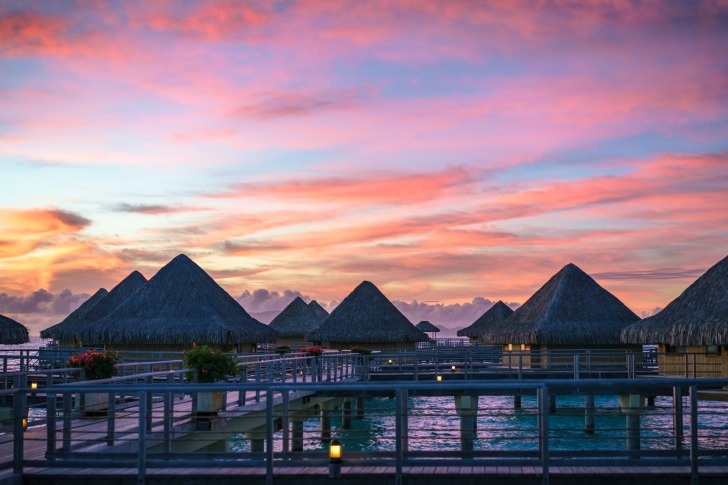
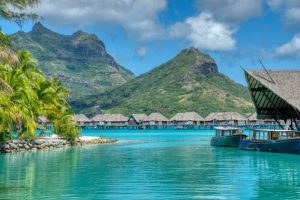
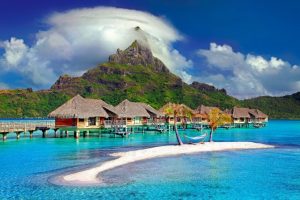
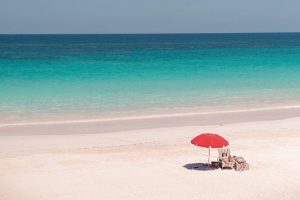
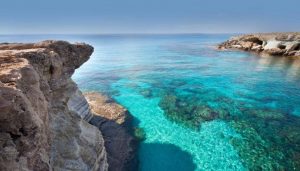
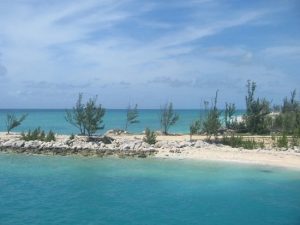
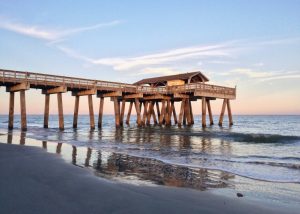





Paradise on earth
I would visit it every summer if it didn’t involve such a long flight for me. This was the first exotic destination I’ve checked off my list. Everything went as planned, from the flight there to the flight back. We’ve stayed at a 5 star resort but we ventured outside to explore the island. Just like you mentioned already, we were advised to have a guide with us so we did just that.
Being a somewhat pricey destination we’ve expected everything to be on par with the 5 stars label and it was.
If, for whatever reasons, you want to flaunt your YSL purse around the island, I would strongly suggest being accompanied. Bag snatching along with pickpocketing are two of the main concerns here so an expensive bag would easily attract only unwanted attention.
I’m not one for swimming, I just go into the water to get the sand off or to cool down a bit but if you’re a fan I would listen to the advice. Some areas are recommended for swimming while some are flagged as huge risks due to impending risk of bumping into a shark, a jellyfish or a sea urchin, among many other live creatures that are lurking in the water.
This might sound stupid but I’m always on the lookout for falling coconuts. I had a near miss with a coconut falling just in front of me. I just avoid them, there are plenty of other shadowy places where I can sit.
Mind you, the overall vibe of the island is very romantic, I would say, with the occasional big group so solo travelers are not that often spotted here. The island has a somewhat 14th February, honeymooning kind of appeal – which I totally get – so if you’re traveling alone it might be a bit awkward if you’re the self-aware type. Again, listen to your common sense and don’t venture alone in the deep forest.